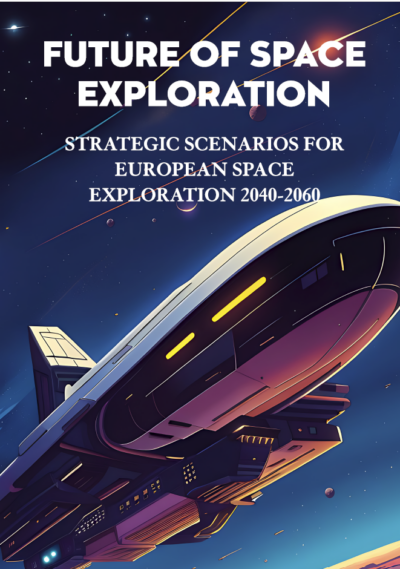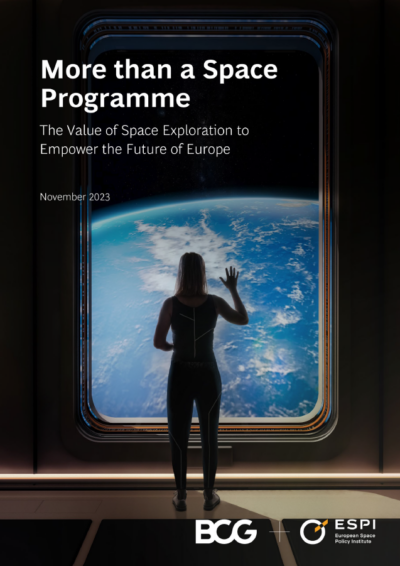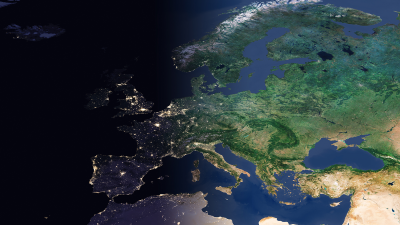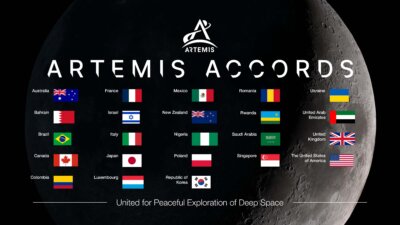Executive Brief No.10
On 22 February 2017, the Italian Space Agency (ASI) and the China Manned Space Agency (CMSA) signed an agreement of cooperation between the two Agencies on a range of human spaceflight activities. This agreement is one of thirteen signed recently by Italy and China in the perspective of a scientific and industrial collaboration between the two Countries.
The scientific collaboration set up in the agreement between ASI and the CMSA includes biomedical research and physiological experiments, on the consequences of long-duration space missions and on the technology needs for human spaceflight. The agreement also considers joint work on scientific payloads, data sharing and the use of technical facilities. Overall, these thirteen agreements represent an important step for Italy, with the aim to recreate a new “Silk Road”, with space playing a fundamental role, as stated by Professor Roberto Battiston, President of ASI. This accord on Italian-Sino space activity helps to highlight the growing importance of the globalisation of space, in which technology and science play a relevant part.
This decision will have a strong impact on the current and future activities of both countries and it will possibly reshuffle future relations between Europe and China along with the future developments ofrelated manned space activities.
On the Italian side, the partnership with the CMSA would reinforce an already existing relationship with China. Furthermore, in a broader sense, this scientific collaboration can be helpful for the whole Italian R&D sector, combining Italian know-how and the availability of Chinese space infrastructures. On the other side, China is changing its attitude towards international cooperation. It has been keen to promote cooperation in space, and has worked both with Russia’s space programme, ESA and others, such as France and Germany. The increased cooperation with western partners helps to present a friendlier and open image of China in space, and strengthens its foreign policy efforts to enable more international engagement.
1. The Future of the ISS
The consequences of the Italy-China agreement could be relevant considering the leading position that Italy has maintained in the field of human spaceflight, particularly in the biomedical field and in the construction of the ISS modules.
In recent years China has developed a promising human spaceflight programme, especially with its development of the Tiangong Space Station, which might impact the future of the international space cooperation in this field. The agreement between China and Italy might also influence the future evolution of the ISS, strongly supported by Italy, possibly opening up new venues for the private space actors.
Furthermore, this framework agreement might enable other large space actors to warm up to the involvement of China on the global scene, since Italy is a long-term established partner in manned space activities, with key players such as ESA and NASA. However, it is important to figure out which kind of legal framework would be set up to guarantee a mutual exchange of science in exchange of the utilization of the Chinese station by Italian astronauts.
2. ESA and CMSA: Which Framework for Europe-China Collaboration in Manned Space Activities?
It is important to recall that Italy has a relevant role within ESA. Here, Italy´s agreement with Chinamight help to influence and usher in the future evolution of the relations between ESA and the CMSA.
The ASI-CMSA agreement is in line with the ESA-CMSA cooperation agreement signed on 11 December 2014. This cooperation represents for both agencies an important milestone that helps to strengthen bilateral cooperation between both institutions and to offer to China a more friendly collaborative framework.
ESA Member States did not raise reservations regarding this agreement that paves the way to a fullcollaboration between ESA and CMSA, which should facilitate bilateral relations between China and MS, as already achieved by France, Germany and Italy. It is important to remember that China, together with Russia and U.S. represent important partners, so therefore bilateral and multilateral cooperation are opportunities for Europe to better position itself in manned space-related activities.1
In the global political context, it is too early to say if the evolution of a European-Chinese collaboration will depend on the positioning and evolution of the new U.S. administration. It is therefore quite difficult to anticipate at the moment in which framework such collaboration could materialize.
References
1. European Space Agency (ESA) Ministerial Meeting (December 2nd 2014). Resolution on Europe’s space exploration strategy. ESA/C-M/CCXLVII/Res. 2 (Final) of 2nd December 2014, Luxembourg.
http://esamultimedia.esa.int/docs/corporate/Final_resolutions_1_2_3_from_CM_2014_Releasable_to_the_public.pdf




